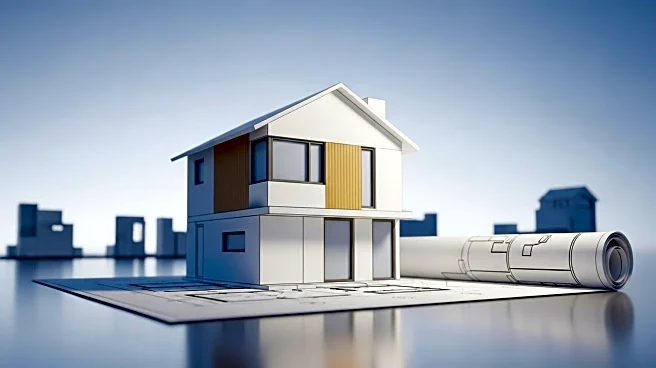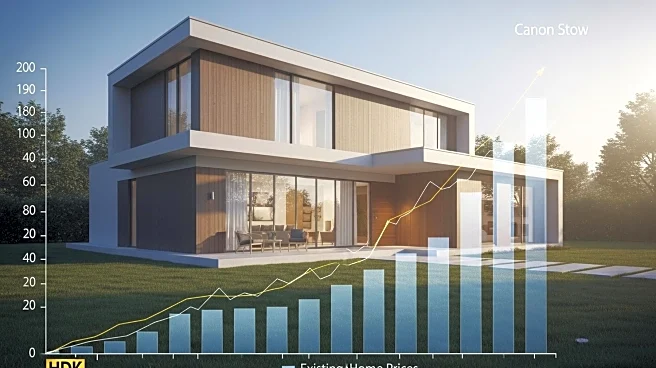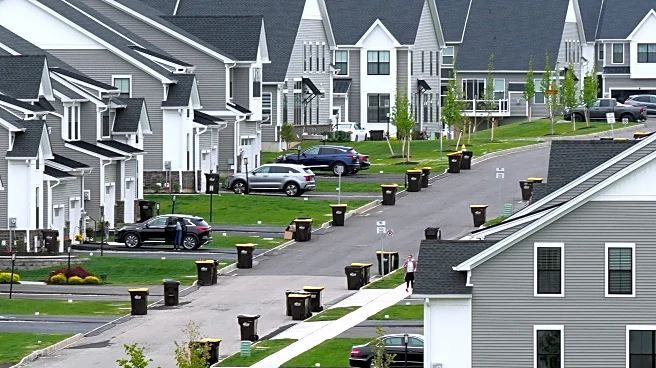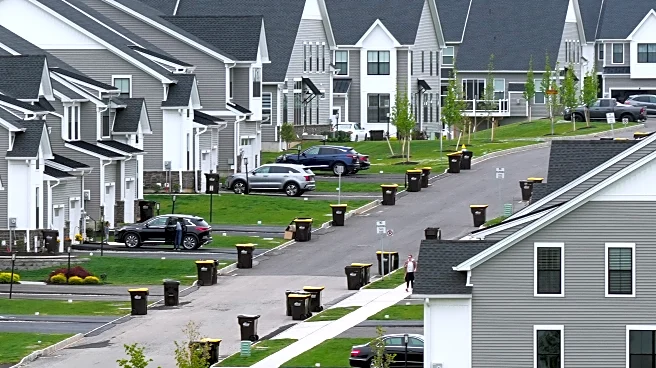What's Happening?
The U.S. housing market is experiencing a unique trend where new homes are cheaper than existing ones. In August, new home sales surged to an annual rate of 800,000, a 20.5% increase from the previous month, while existing home sales fell slightly. The median sale price for new homes was $413,500, compared to $422,600 for existing homes. Builders have been offering price discounts and incentives to attract buyers, contributing to this pricing anomaly. Despite a decline in mortgage rates, affordability improvements have not significantly reversed the housing market slowdown.
Why It's Important?
The pricing dynamics in the housing market have significant implications for buyers, sellers, and the broader economy. The affordability of new homes could stimulate demand, potentially boosting construction activity and related industries. However, the higher prices of existing homes may deter some buyers, affecting sales and inventory levels. The housing market is a critical component of the U.S. economy, influencing consumer spending, employment, and economic growth. The current trends could impact future housing policies and market strategies.
What's Next?
As mortgage rates continue to decline, the housing market may see increased activity in the fall. Builders are becoming cautious about offering further price cuts, which could affect future sales. The gap between new and existing home prices is narrowing, suggesting a potential return to traditional pricing dynamics. Market participants will be watching for changes in inventory levels and buyer behavior, as these factors will influence the market's trajectory in the coming months.











